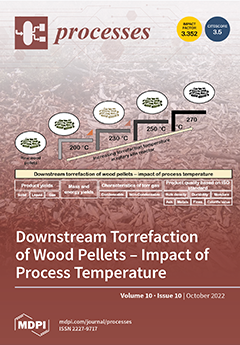Coffee waste-derived biochar was found to immobilize heavy metals in contaminated soil, although there are few studies involving these materials. Given the large amount of waste generated in the coffee industry, this presents a relevant opportunity to contribute to the circular economy and environmental sustainability. Therefore, the objective of this study was to evaluate the effects of the application of biochars derived from coffee grounds and coffee parchment in the remediation of a Cd, Zn and Pb contaminated soil and at the development of jack beans (
Canavalia ensiformis) in this area’s revegetation. The biochars were pyrolyzed at 700 °C, and the treatments were: contaminated soil (CT); contaminated soil + calcium carbonate (CaCO
3); contaminated soil + 5% (weight (
w)/weitght (
w)) coffee ground biochar and contaminated soil + 5% (
w/
w) coffee parchment biochar. These treatments were incubated for 90 days, followed by the cultivation of jack beans for 60 days. Soil samples, soil solution and plants were analyzed for nutrients and heavy metals. The addition of coffee grounds and coffee parchment biochars significantly reduced the contents of heavy metals in the soil compared to the Control (32.13 and 42.95%, respectively, for Zn; 26.28 and 33.06%, respectively, for Cd and 28.63 and 29.67%, respectively, for Pb), all of which had a superior performance than the CaCO
3 treatment. Thus, following the observed reduction in the soil soluble fraction of metals, its uptake by the plants was also reduced, especially limiting Cd and Pb accumulation in plant dry matter. In addition, coffee parchment biochar promoted a greater accumulation of nutrients in the shoots, i.e., for K and P (1450 and 21.5 mg pot
−1, respectively, dry matter basis) compared to the control (54.4 and 9.3 mg pot
−1, respectively). Therefore, coffee parchment biochar use in association with jack beans may represent a viable tool for the remediation of metal contamination concomitantly with revegetation of the contaminated area.
Full article





